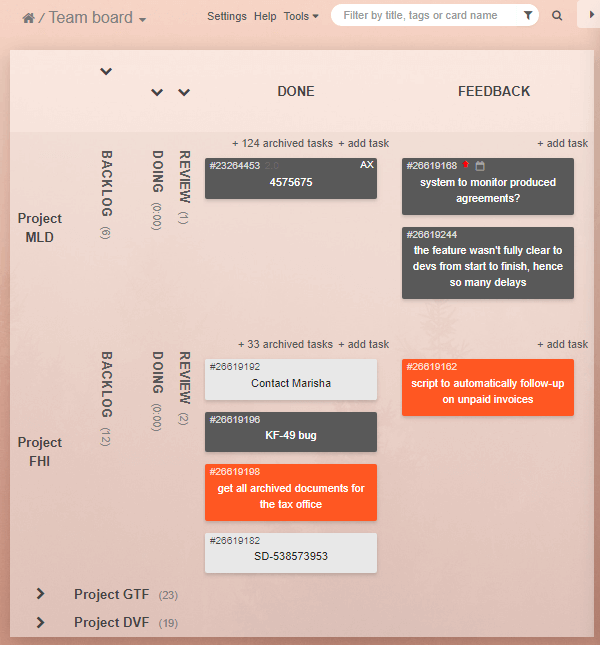Blog
Overcoming Team Dysfunctions15 Oct 2019

In managing day to day team activity, it can get difficult to keep tabs on how well a team is actually doing. Completed tasks count on the team's Kanban board may not tell the full story, seeing as quantity alone says nothing about quality. Analyzing how many have return from Done to Doing - tells a more complete story, but there are things we can actively do before things need to be re-worked.
Talk to the team.
Assuming a minimal amount of social skills on your part, while discussing current issues and successes you should be pick up on the team's general states of mind and attitudes towards the ongoing project. It's likely the shortest way to identifying issues and getting ideas about fixing them, as well as on estimating a project's completion time. Don't underestimate this basic method!
But don't talk once and for all. Keep checking.
It would not be safe at all, to assume, that the fact that the team was doing fine last week, means it will continue like this today and in the future. As team leader or manager, you should continue to work on team development and improvements, and never stop assessing how and what they do.
Empower them, rather than looming over.
This boils down to both you and your team needing to have the confidence in what you do, and how you do it. Achieving it does not happen miraculously - it has to be worked on, and the more experience people have, the easier it will come about. Give the team control over what they do, and apply a policy, by which they use their judgment for everything, unless explicitly told otherwise.
Welcome conflicts!
Their existence, nature and outcomes tell a valuable story about a team. Fear of starting a conflict can stifle and hurt the outcome of the team's work. Conflicts should therefore be seen as opportunity to do better work, and to improve team collaboration. It's absolutely necessary for teams working in changing and complex environments to be able to voice, address and resolve conflicts. Unless your team's line of work is based on repetitive and non-creative actions only, lack of conflicts could be seen as first sign of people's disengagement or negligence.
Stay open to team's point of view.
In order to be able to take part in, or even start a conflict for a valid reason, team members must first care about the quality of the organization's work, feel valued enough, to want to share their opinion and fight for it, and to have a sense of responsibility for the product. They also need to trust other team members and respect their opinions. All of these conditions make for both happier team members and better products, but are not always possible or easy to achieve, for a multitude of reasons.
An easy way to welcome people's opinion is making room for a feedback / opinions column on the team's board. When time comes to review the process steps the team took to complete the project, people's comments will be available for future consideration. Taking time to think these over will keep the team invested in how and what you do, as a team.

But regardless of trying to stay ahead of problems, keeping tabs on a project status will be of help to both efficient teams, and to those who are still working their way out of a rut. Use a Kanban Tool board with automatically generated Kanban metrics, to get a quick quantitative insight into the progress. Readily available analytics include a Breakdown Chart, Time Report, Lead & Cycle Time, Cumulative Flow and Changelog.
These, combined with keeping power with the team and staying on top of their morale, can hugely help to minimize negligence and improve projects quality, as well as speed of completion.
Sign up for a 14-day free trial
to test all the features.
Sign up now and see how we can help
your organization deliver exceptional results.